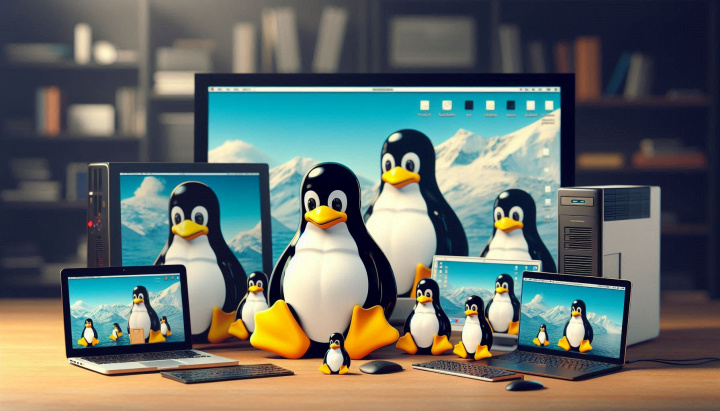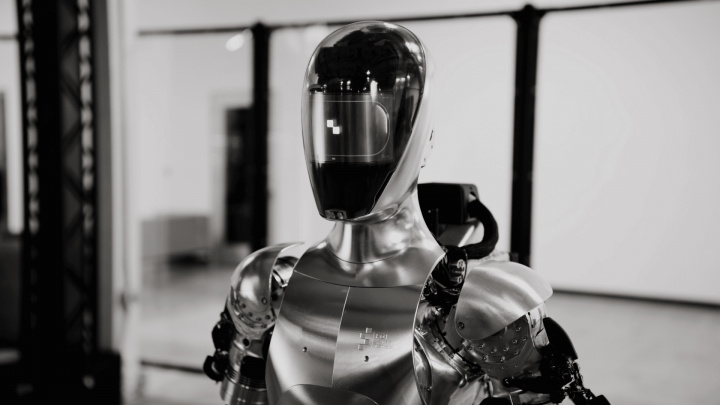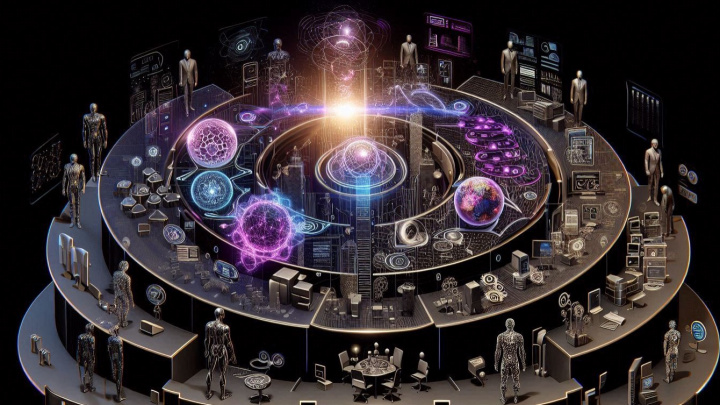A Look Back: The History of the Linux Operating System
The Linux operating system (OS) has become one of the most influential pieces of software today, especially in the world of servers, data centers, and developer environments. Its journey began in the early 1990s, and thanks to its open-source model, flexibility, and community support, it continues to evolve and spread.

The history of Linux began in 1991 when a Finnish university student, Linus Torvalds, started working on a new operating system kernel. At the time, most computers used Unix-based systems, but their licensing and distribution were extremely costly and restrictive. MINIX, an operating system designed for teaching purposes developed by Professor Andrew S. Tanenbaum, was also available, but its limited functionality and closed source code couldn't fully satisfy the needs of Torvalds and the community.
Linus Torvalds' initial goal was to create a free and open-source kernel that offered functionality similar to Unix but could be freely modified and distributed. As a first step, he wrote the code for a simple terminal emulator, which he then expanded into a full operating system. On August 25, 1991, Torvalds made a famous announcement in the comp.os.minix newsgroup, announcing his project and asking for help with further development.
The first version of the Linux kernel, 0.01, was released on September 17, 1991, with just 10,000 lines of code. This version wasn't yet usable as a general-purpose operating system, but it laid the foundation for future developments. Version 0.02 was already capable of running the GNU Bash shell and the GCC compiler, which was a huge step forward in development.
The Meeting of the GNU Project and Linux
For Linux to function as a truly complete operating system, it needed software developed by the GNU project. The GNU (GNU's Not Unix) project was initiated by Richard Stallman in 1983 with the goal of creating a completely free operating system. The GNU project had already developed many important tools, including the Bash shell, the GCC compiler, and many other Unix-compatible programs. The only missing piece was the kernel, a gap filled by Torvalds' Linux.
The combination of the Linux kernel and the GNU project's tools resulted in the first fully functional free operating system, often referred to today as GNU/Linux.
Development Steps and Milestones
Linux developed rapidly in the 1990s, partly because its open-source nature allowed developers from all over the world to contribute to the project. The first distributions, such as Slackware (1993) and Debian (1993), appeared during this time, laying the groundwork for the diversity of modern Linux distributions we see today.
In 1994, Linux version 1.0 was officially released, marking the first stable, widely accepted version. Version 1.2 arrived in 1995, and the first Linux-based servers began to appear around this time.
Version 2.0 was released in 1996 and introduced support for multiple processors (SMP - Symmetric Multi-Processing), opening up new possibilities for scalability, especially in the server world.
The Spread and Corporate Acceptance of Linux
In the late 1990s and early 2000s, Linux became increasingly popular, particularly for servers and data centers. Major enterprise distributions like Red Hat Enterprise Linux (RHEL) and SUSE Linux Enterprise Server (SLES) emerged, offering professional support and services for businesses.
During the 2000s, Linux also became more suitable for desktop use, thanks to the development of desktop environments like GNOME and KDE. Although Linux never achieved dominant market share on the desktop, it gained significant support among developers, scientists, and technical professionals.
Significant Milestones and Historical Events
-
2003: The SCO vs. IBM lawsuit, in which SCO Group claimed that IBM had improperly used UNIX code in the development of Linux. The lawsuit dragged on for years but ultimately ended in victory for the Linux community, setting a significant precedent for the protection of open-source software.
-
2005: Linus Torvalds launched the Git version control system, originally created to facilitate Linux kernel development. Git has since become one of the world's most popular version control systems, used not only in software development but in many other fields as well.
-
2007: The release of the Android operating system, which is built on the Linux kernel. Through Android, the Linux kernel found its way into the pockets of millions, as most modern smartphones run this system.
-
2013: The announcement of SteamOS, a Linux-based operating system developed by Valve, which increased Linux's role in the gaming world.
Today, Linux is the most widely used operating system kernel in the world when considering servers, cloud systems, embedded devices, and Android devices. The world's largest data centers, including those of Google, Facebook, and Amazon, run Linux. Additionally, almost all of the fastest supercomputers are Linux-based.
An interesting fact is that the Linux kernel consists of over 25 million lines of code, contributed by thousands of developers worldwide. The development of Linux never stops, as new versions of the kernel are continuously released, bringing new features and performance improvements.
Major Linux Distributions in Chronological Order
1. Slackware (1993)
- Significance: The first widely recognized Linux distribution, aiming for Unix-like simplicity and stability.
- Pros: Stable, minimal packages, provides maximum control to the user.
- Cons: Cumbersome setup, little automatic configuration, not suitable for beginners.
2. Debian (1993)
- Significance: One of the most influential and widely used distributions. Forms the basis for many other distributions (e.g., Ubuntu).
- Pros: Stable, large package repository, community-driven development, long-term support.
- Cons: Stable versions often lag behind in adopting the latest software.
3. Red Hat Linux (1994)
- Significance: The first commercially focused Linux distribution that gained significant corporate backing.
- Pros: Easy installation, strong support, subscription model providing enterprise-level services.
- Cons: Paid, latest versions and services often only available to subscribers.
- Discontinuation: Red Hat Linux was discontinued in 2003 and replaced by Red Hat Enterprise Linux (RHEL).
4. SUSE Linux (1994)
- Significance: The first major German distribution, later widely used in the enterprise sector.
- Pros: Strong enterprise support, good documentation, YaST configuration tool.
- Cons: Slower update cycles, less community-oriented than some others.
5. Mandrake Linux (1998)
- Significance: A user-friendly distribution aimed at beginner Linux users.
- Pros: Easy installation, graphical tools, good hardware support.
- Cons: Faced financial difficulties over time, and the community dwindled.
- Discontinuation: Attempted a relaunch as Mandriva in 2011 but ceased operations completely in 2015.
6. Gentoo (2002)
- Significance: A source-based distribution offering maximum customization.
- Pros: High degree of customization, optimization for the user's hardware.
- Cons: Very time-consuming installation and configuration, not for beginners.
7. Ubuntu (2004)
- Significance: One of the most popular and user-friendly distributions, based on Debian.
- Pros: Easy installation, broad hardware support, regular releases, large community.
- Cons: Sometimes criticized for too frequent updates or Canonical's management decisions.
8. Fedora (2003)
- Significance: A community distribution sponsored by Red Hat, focused on showcasing the latest technologies.
- Pros: Innovative, always includes the latest technologies, close ties to Red Hat Enterprise Linux.
- Cons: Short support cycles, frequent updates.
9. Arch Linux (2002)
- Significance: A minimal, simple yet powerful distribution using a "Rolling Release" model.
- Pros: Maximum customization, always up-to-date, strong community documentation (Arch Wiki).
- Cons: Steep learning curve, not for beginners.
10. CentOS (2004)
- Significance: A free, community-based distribution built from Red Hat Enterprise Linux (RHEL) source code.
- Pros: Stable, enterprise-level environment, but free.
- Cons: Slower updates, lacks official support.
- Change in Direction: In 2021, the CentOS project changed direction. It continues as CentOS Stream, which is not a direct free clone of RHEL but rather an upstream "rolling-release" development branch.
The Future of Linux
The future of Linux looks promising, as the open-source development model continues to appeal to both the community and corporations. With the rise of cloud computing, containerization (e.g., Docker, Kubernetes), and the Internet of Things (IoT), Linux's role is set to grow further.
Linux is expected to remain at the forefront of technological innovation, particularly in areas like automation, artificial intelligence, and data security. The Linux kernel and the distributions built upon it will continue to be crucial for operating and advancing IT infrastructures.
Closing Thoughts
The history of Linux is a unique example of how community development and open source can create a globally widespread and highly successful technological solution. The system's flexibility, stability, and scalability ensure that Linux will continue to play a defining role in the world of information technology for the foreseeable future.





